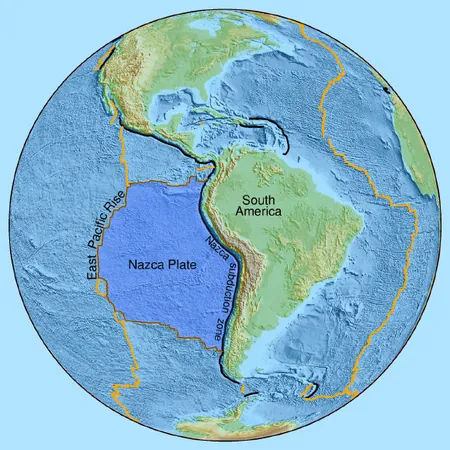
Scientists Uncover Ancient Subduction Zone Beneath Pacific Ocean
2024-10-01
Introduction
In a groundbreaking discovery, a team of geoscientists from the University of Maryland and the University of Alberta has unveiled the presence of an ancient subduction zone deep beneath the Pacific Ocean. This remarkable finding sheds light on geological processes dating back to the Mesozoic era, specifically between 250 and 120 million years ago, when a significant portion of seafloor sank into the Earth’s mantle at the East Pacific Rise, a major tectonic plate boundary.
Research Methodology
Led by University of Maryland researcher Jingchuan Wang, the team employed cutting-edge seismic imaging techniques to penetrate deep into the Earth’s mantle. Their innovative approach revealed a notably thick area in the mantle transition zone, which lies approximately 410 to 660 kilometers beneath the Earth's surface. This zone, crucial in separating the upper and lower mantles, expands or contracts based on temperature variations.
Significance of Findings
The researchers posit that this subducted seafloor could elucidate the peculiar structure of the Pacific Large Low Shear Velocity Province (LLSVP) — a gigantic region in Earth's lower mantle that appears to be disrupted by the slab of the ancient ocean floor. "This thickened area is like a fossilized fingerprint of an ancient piece of seafloor that subducted into the Earth approximately 250 million years ago," Dr. Wang stated, emphasizing the rarity of such insights into Earth’s geological past.
Understanding Subduction Zones
Subduction is a critical geological process wherein one tectonic plate slides beneath another, recycling surface materials back into the mantle. This process often leaves traces that can be observed on the Earth’s surface, including volcanic activity, earthquakes, and the formation of deep oceanic trenches. However, this study takes a novel approach by utilizing seismic waves to generate detailed maps of structures obscured within the mantle.
Revolutionary Imaging Techniques
Dr. Wang likened seismic imaging to a CT scan, allowing researchers to achieve a cross-sectional view of the Earth's interior. "Typically, oceanic slabs of material are fully consumed by the Earth without leaving any visible signs on the surface," he explained. "But this new perspective of the ancient subduction slab provides groundbreaking insights into the relationship between deep Earth structures and surface geology."
Unexpected Discoveries
Surprisingly, the researchers discovered that materials within this region are moving significantly slower than previously estimated—about half the expected speed. This suggests that the mantle transition zone may serve as a barrier, altering the typical movements of materials ingrained deep within the earth. "This discovery raises new questions about how deep-Earth processes exert influence over surface phenomena across massive distances and long time scales," Dr. Wang noted.
Publication and Future Implications
The researchers' findings have been documented in the prestigious journal *Science Advances*, contributing to our understanding of tectonic dynamics and the historical evolution of Earth’s geology. Could this discovery change the way we perceive seismic activity and its geological implications? Only time will tell.


 Brasil (PT)
Brasil (PT)
 Canada (EN)
Canada (EN)
 Chile (ES)
Chile (ES)
 España (ES)
España (ES)
 France (FR)
France (FR)
 Hong Kong (EN)
Hong Kong (EN)
 Italia (IT)
Italia (IT)
 日本 (JA)
日本 (JA)
 Magyarország (HU)
Magyarország (HU)
 Norge (NO)
Norge (NO)
 Polska (PL)
Polska (PL)
 Schweiz (DE)
Schweiz (DE)
 Singapore (EN)
Singapore (EN)
 Sverige (SV)
Sverige (SV)
 Suomi (FI)
Suomi (FI)
 Türkiye (TR)
Türkiye (TR)